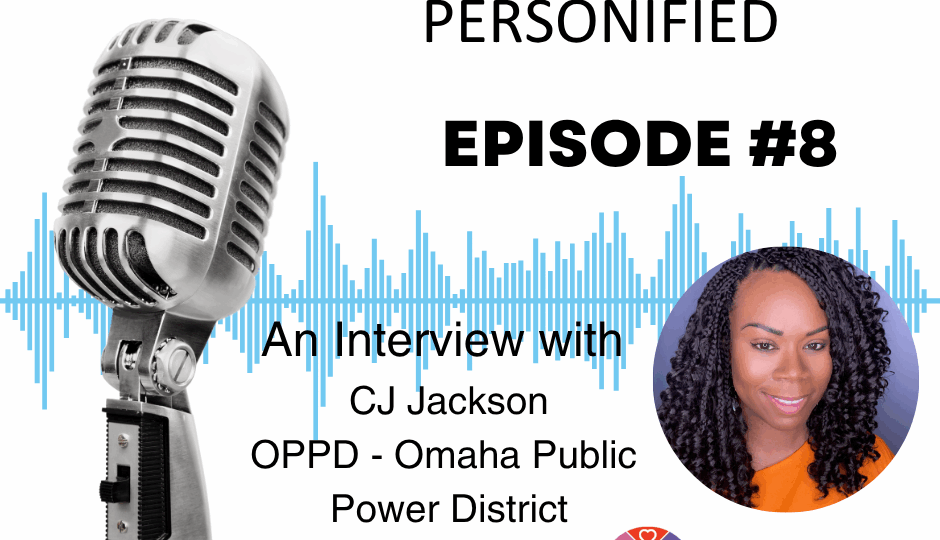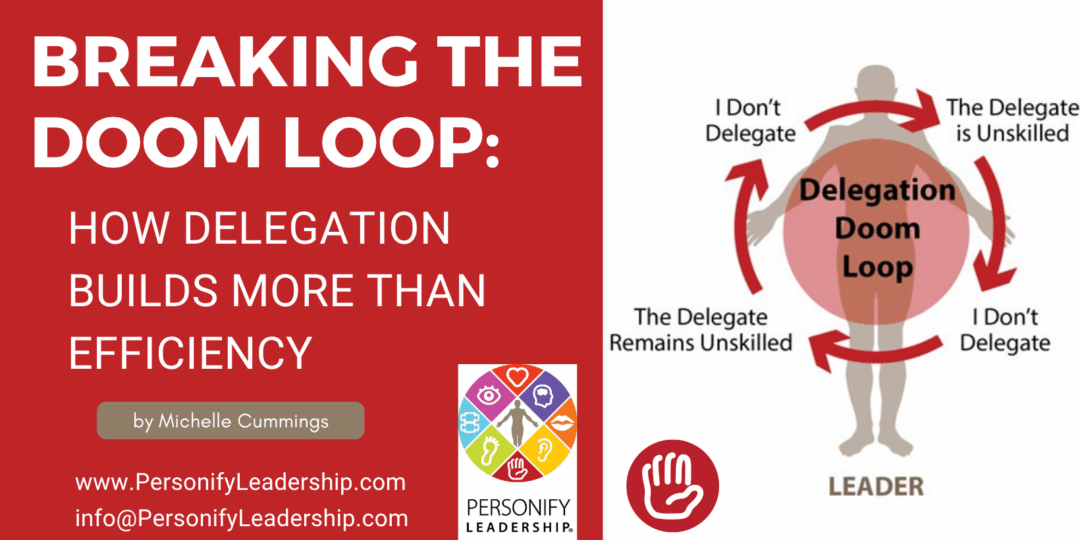Leadership Personified Episode #8: An Interview with CJ Jackson from OPPD
- Jul 22, 2025
- By personifyadmin
- In Newsletters, Video
- 0 Comments
Building Leadership with Integrity and Intent CJ Jackson, Manager of Organizational Development, Omaha Public Power District
Finding the Courage to Lead Through Change: CJ Jackson first encountered Personify Leadership at a time when Omaha Public Power District (OPPD) was pushing for deeper leadership alignment. As a manager focused on growing leaders across a utility organization steeped in legacy systems, CJ was looking for a program that balanced structure with heart. What stood out to her was how Personify’s body-based competency model sparked immediate self-reflection and connection. It wasn’t about checking a box—it was about shifting mindsets. From the very first exposure, she saw the potential for wide organizational impact.
(more…)Looking Inward to Listen Better
- Jul 22, 2025
- By personifyadmin
- In Newsletters
- 0 Comments
Staying fully present in a conversation is one of the most powerful skills a leader can develop. Yet even with the best intentions, it is easy to get distracted. Sometimes the cause is external, like noise or interruptions. Other times, the real distraction comes from within.
Internal distractions are often harder to spot. You might be replaying a difficult meeting in your head, worrying about a deadline, or feeling defensive about what is being said. These thoughts and emotions pull your attention away from the person speaking, even if you appear to be listening.
(more…)Break the Doom Loop: How Delegation Builds More Than Efficiency
- Jul 17, 2025
- By personifyadmin
- In Newsletters
- 0 Comments
by Michelle Cummings
Delegation is often framed as a time-saver. And while it can free up your calendar, the deeper value lies elsewhere. Effective delegation is not about offloading work – it’s about developing people. It’s how leaders build capacity, trust, and long-term momentum.
But many leaders fall into what we call the Delegation Doom Loop. It starts with thinking, “It’s faster if I just do it myself.” That might be true in the short term. But over time, it creates a cycle where others never grow, and the leader stays buried in tasks that could be shared. The loop continues until burnout, resentment, or stalled growth forces a change.
(more…)Even the most skilled communicators have moments when their message does not land. You might be clear, confident, and well-prepared, but the other person’s expression or response tells you something is off. This is where flexibility becomes a leadership strength.
Sticking with the same approach when it is clearly not working can create frustration on both sides. The other person may shut down, get defensive, or become disengaged. You may feel the need to push harder, explain more, or retreat altogether. None of those options improves the connection.
(more…)Leading with the Whole System in Mind
- Jul 12, 2025
- By personifyadmin
- In Newsletters
- 0 Comments
Every organization is made up of interconnected parts: departments, teams, and individuals that depend on each other to succeed. As leaders, it is easy to focus on the needs of your immediate group without realizing how your actions ripple through the larger system. Sometimes those actions unintentionally create division or fuel misunderstanding between other parts of the organization.
For example, pushing for a tight deadline might meet your team’s goals but strain another department’s capacity. Sharing partial information may keep your group informed but leave others confused about priorities. These situations are rarely intentional, yet they can weaken trust and collaboration across the organization.
(more…)Say It So They Can Hear It: Adapting Your Communication Style with Awareness
- Jul 10, 2025
- By personifyadmin
- In Newsletters
- 0 Comments
by Michelle Cummings
Most leaders spend a lot of time refining what they want to say. Fewer think about how that message is actually received. But communication isn’t about transmission – it’s about connection. And connection often hinges on how well you understand your own natural style and how others might interpret it.
DiSC is one of the most widely used communication and behavior assessments for a reason. It gives people a common language to understand preferences, tendencies, and blind spots. Are you fast-paced and assertive? Warm and people-focused? Analytical and cautious? Each DiSC style brings strengths—but also potential friction when misunderstood.
(more…)Courage is not the absence of fear, it’s the ability to act in spite of it. For leaders, courage is the spine that supports every other skill. Without it, difficult conversations are avoided, tough decisions get delayed, and opportunities slip away. But like any muscle, courage can be developed with intentional practice.
Leadership courage is built on four key skills: speaking up with honesty, making values-based decisions, taking responsibility for mistakes, and standing firm in the face of resistance. These aren’t abstract ideals; they are daily practices that separate leaders who inspire trust from those who merely manage tasks.
(more…)Reading the Room: Knowing When Tension Becomes Trouble
- Jul 08, 2025
- By personifyadmin
- In Newsletters
- 0 Comments
Workplace tension isn’t always a bad thing. A healthy level of pressure can sharpen focus, drive action, and spark creative solutions. It pushes people to stretch, adapt, and improve. But when tension goes unchecked, it can quietly shift into harmful stress that drags down morale and performance.
Great leaders know how to tell the difference. They don’t just look at deadlines and results. They pay attention to tone, behavior, and energy. Are people still collaborating or are they retreating? Are conversations productive or short-tempered? Are mistakes increasing? These are signs worth noticing.
(more…)Don’t Finish Their Sentence: The Hidden Cost of Interrupting
- Jul 04, 2025
- By personifyadmin
- In Newsletters
- 0 Comments
by Michelle Cummings
Listening is one of the most important skills in leadership – but it’s also one of the easiest to fake. You can nod, smile, and even repeat back a few words, all while planning your next comment. But true listening asks something deeper: patience. And nothing reveals a listening gap faster than interruption.
Most interruptions don’t come from a place of disrespect. They come from habit, urgency, or the belief that we already know what’s coming next. But when we interrupt or shift the conversation before the speaker finishes, we cut short more than their words. We cut short their thinking, their trust, and their willingness to fully engage.
(more…)
×
At the heart of every high-performing organization is a strong leader – someone who drives the vision, creates the company culture and knows how to call the shots in a time of crisis. Wouldn’t it be great if every company had multiple leaders like that?
Stay up to date.
Join Our Newsletter for the latest Personify Leadership News.
© 2012-2025 Personify Leadership. All Rights Reserved.










Recent Comments